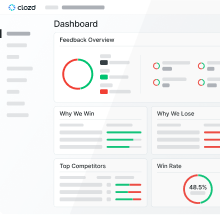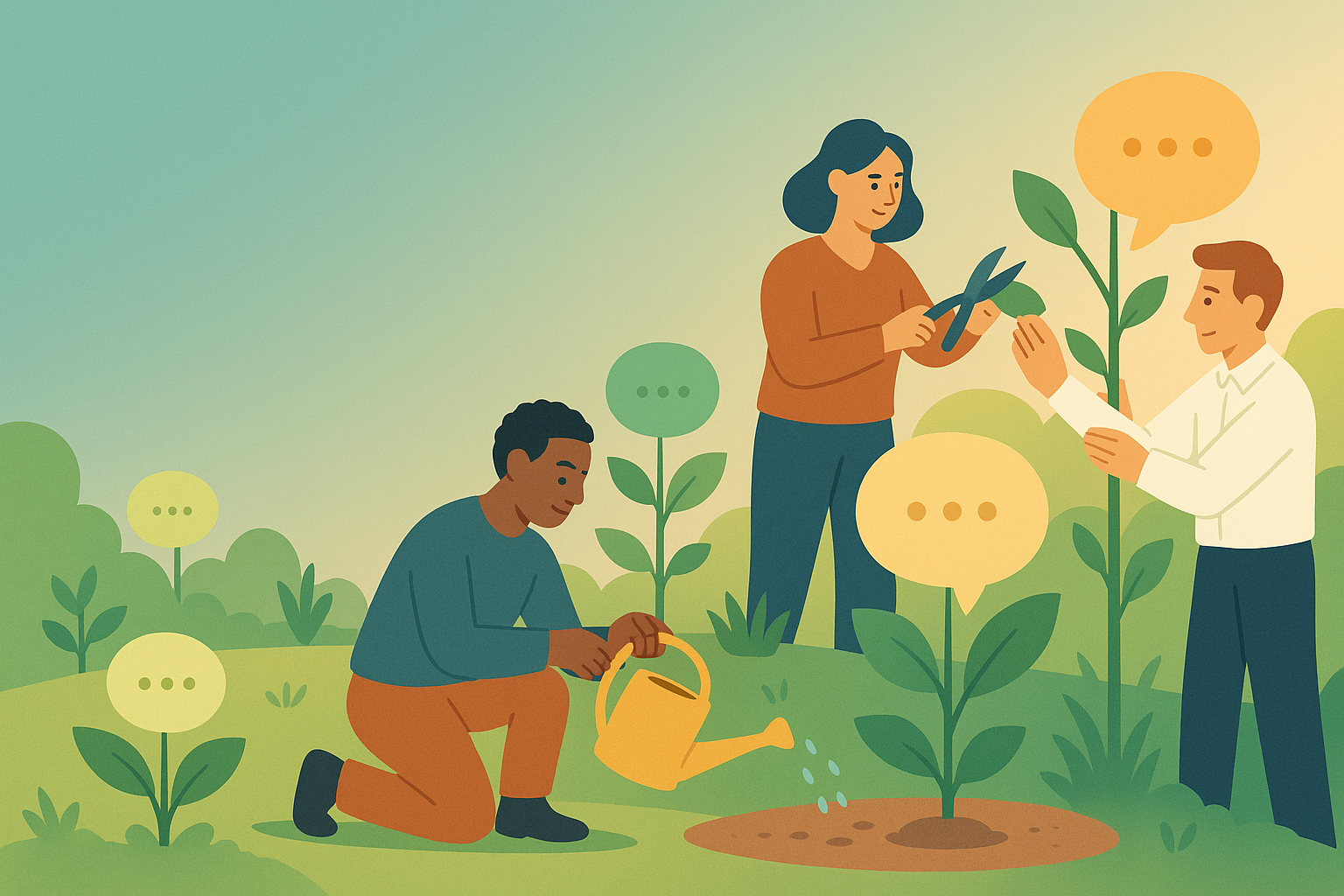
While SaaS companies primarily sell software, please don’t disregard the service aspect of software-as-a-service. Day in and day out we gather feedback from SaaS clients, and it is striking just how many SaaS providers neglect or ignore their clients after the sale is closed. Across hundreds of win-loss interviews, clients (and potential clients) of many companies lament the lack of connection with actual humans at SaaS companies — we frequently hear horror stories about unresolved support tickets, rocky implementations, and business faux pas committed by account and customer success representatives.
Touchpoints are any point of contact between your buyers and your company, whether that be through human interactions, your marketing and advertising materials, or general brand perception. Human touchpoints — interactions between your buyers and real people at your company — are extremely important. Below we explore why they are so important, common examples of touchpoints for SaaS companies, and how you can strengthen your relationship with your buyers.
Why Are Human Touchpoints Important?
According to an article in the Harvard Business Review, “acquiring a new customer is anywhere from five to 25 times more expensive than retaining an existing one” (HBR). The average company’s top ten customers drive 60% of the company’s sales (ACE). What does this mean for SaaS companies? It means that you must invest in good relationships with your existing customers because they drive revenues, and it is expensive and inefficient to acquire new customers.
One of our consultants, Brittany Moreland, explains:
While smaller companies with less-complex implementations may be more motivated to leverage self-service options rather than paying for an expensive consultant, a huge airline company, for example, would expect a lot more hand-holding throughout the process.
In larger and more complex enterprise deals, a solid service experience may be as important as the technological capabilities of the product.
Poorly managing touchpoints can worsen brand reputation in the market and increase customer churn. Meaningful interactions with clients at human touchpoints can set a software-service offering far above the competition.
An Example
Let’s briefly consider an industry far from the SaaS world — fast food. Although people are still simply purchasing a product (food), if the service offering breaks down, customers will churn. For instance, imagine you are at the local drive-through. You drive up, glance over the brightly colored menu, and order a milkshake and chicken nuggets. After waiting at the window for a few minutes, you start to wonder where your food is. Thirty minutes later, after knocking on the window, honking, and complaining to no avail, a restaurant employee finally comes out with your milkshake but informs you that there are no more chicken nuggets. At this point your milkshake more closely resembles warm milk than ice cream, and a long line of cars stretches behind you. How are you feeling? Angry? Embarrassed? Likely to eat there again?

Let's briefly consider an industry far from the SaaS world—fast food. This example is actually not far fetched when compared to buyers in the B2B world. We have heard hundreds of SaaS buyers complain that they were oversold during the sales process, only to find that the product doesn’t actually perform how they were told it would (i.e., no chicken nuggets). They bemoan missed deadlines and unwieldy implementations prolonged by unresponsive company reps. They talk about unanswered emails and phone calls that leave them unsure of how to proceed. In extreme cases, due to long waits and no results, buyers walk away and seek a new vendor.
SaaS companies: if you want to decrease your churn and increase customer loyalty, you must improve your customer touchpoints. It’s a basic building-block of business: treat your customers well and your company will thrive. Below are several common touchpoints and suggestions on how to improve the overall customer experience.
Common Touchpoints

(1) Onboarding & implementation:
After your customers have purchased a SaaS offering, they must implement the product in their company’s software environment. Often, buyers have a goal to get the new product up and running with existing systems by a certain deadline. Accomplishing this goal requires help from your reps — this means human interaction with your buyers.
Stay true to the timeline that you sell potential customers on. Be able to answer customers’ questions. Know your stuff. Don’t say “I’ll get back to you.” It’s tacky and unnecessary if you are prepared.

(2) Training & enablement:
Once your customers begin using your product, they often have questions. Even the most intuitive SaaS product takes a while to learn. When your buyers have questions, answer them. Don’t pass the buck to someone else in your organization or just refer buyers back to your company website. People don’t have time to watch 20 training videos — trainings need to be short, comprehensive, and effective. A common complaint goes something like this: “I sent an email asking how to do ABC and never got a reply,” or “I asked about XYZ and was redirected to the FAQ page on the website, which I have already read twice.”

(3) Ongoing support & regular check-ins:
Once your customers have the product implemented and are up to speed on using it, be sure to check in with them on a regular basis to answer their questions and troubleshoot potential problems. Use these check-ins to foster a long-term working relationship — show your customers that you actually care about how your product affects their business. How can you go above and beyond the status quo to deliver a truly memorable service experience?

(4) Renewals & upsells:
Ideally, if you build meaningful business relationships with your clients, their contracts will naturally roll over into new contracts or upsell opportunities. However, this depends heavily upon the quality of your service. If you think you can ignore customers for months on end, only to convince them to renew a contract, think again. SaaS buyers have actually told us that the company they purchased from went completely dark after implementation, only responding to questions once the time for contract renewals came around. This is a ridiculous business practice; don’t do it!
Some Suggestions
Based on what we’re hearing from your customers, buyers want one consistent point of contact within your company. This should be someone who can answer their questions and provide useful resources. Ideally, this will be someone who creates value and builds a healthy relationship with the buyer. Relationships take time and consistency to build, which is why having one dedicated account or customer success rep is so important.
Be consistent with your sales process. The expectations you set while selling should match the reality that buyers experience during implementation and onboarding. Give equal attention to the product and service offerings.
Conclusion
Another of our Clozd consultants, Jonathan Stevens, said this about SaaS companies:
The technology is important and it’s the main product that you’re selling, but you’re a business too. A lot of SaaS companies forget that.
Remember that good businesses create value for their customers and help their customers to succeed. If you’re losing customers, there’s a reason behind it. Decrease your churn and increase your win rates with the help of Clozd’s leading win-loss programs. Learn more here.











.svg)










.svg)

.svg)




